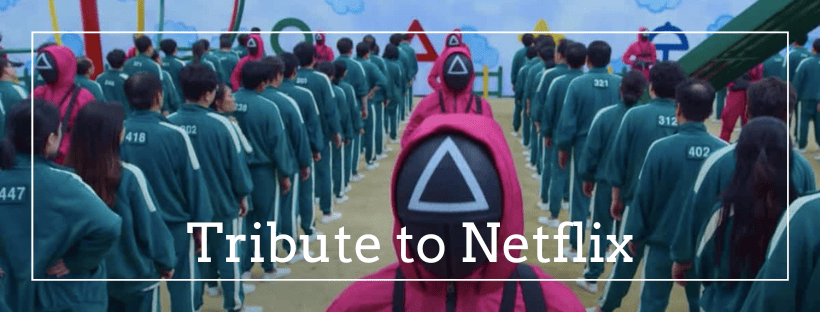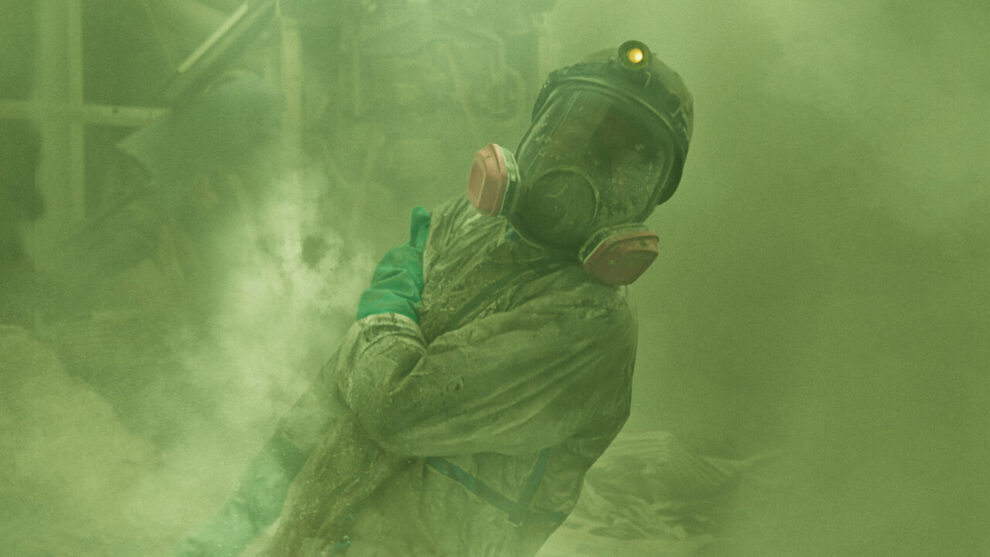Considering the great success “Chernobyl” had back in 2019, a similar series about a similar disaster was bound to come from Japan, with the country's entertainment industry dealing with the events and their aftermath intently as soon as 10 years passed, in 2021. The impressive thing with “Days”, apart from the fact that it was shot in the Fukushima prefecture where the actual disaster took place, is that its level of production does not pale almost at all in front of the humongous US-UK one the HBO titles was. Let us take things from the beginning though.
Click on the image below to follow our Tribute to Netflix

The story is told mostly through the perspective of Masao Yoshida, the real life plant manager at Fukushima Daiichi Nuclear Power Plant in Fukushima. The story starts with the 9.1 Mw which ran for 6 minutes and eventually caused a tsunami, with the quality of the production becoming visible from the presentation of the phenomenon in all its destructive glory. What becomes apparent almost immediately is that the circumstances the Tokyo Electric Power Company and its on-spot employees had to face were even worse than the ones in Chernobyl, since the earthquake and the tsunami caused a complete blackout, to the point that the control rooms had no idea what was going in with the reactors. The first episodes deal with the effort of the employees to restore power, while the government and particularly the Prime Minister demanded answers it was impossible to get. Furthermore, the constant aftershocks made their efforts even more difficult and dangerous, while the threat of another tsunami was always hanging over the heads of the workers.
As the problems pile up, Yoshida is trying to find solutions, while the government, misinterpreting the whole situation, does not urge for an evacuation, although this was not exactly their fault considering the circumstances and the lack of knowledge about what is happening. The setting of the series, however, is already set. The people in the control room for reactors 1 and 2 are in the darkness, and trying to restore power, while, when they do manage to achieve their goal, the horrible circumstances they are in become evident. The reactors are not getting water, the temperature is rising, and after an explosion, the radiation in the area becomes deathly dangerous. In the meantime, in the crisis center Yoshida presides, the angst is intense, but he manages to keep everyone calm, all the while fighting with the occasional political ridiculousness of his higher ups, who also find themselves under pressure from the political leadership and especially a PM with very little patience.
Check also this article
The third main setting involves just that, as the committees set up by the politicians seem ignorant of their subject, while the PM demands answers and results. His attitude, however, takes a direct “hit” when he finally meets with Yoshida, who explains to him that the workers in the control room are essentially a death squad, having to move under radiation levels that are sure to kill them eventually.
Eventually, some moments of hope do appear, as the teams, with the eventual help of the army, manage to achieve some of their goals, but that does not last for long. A second explosion, the continuous earthquakes and the intense leak of radiation eventually force the government to evacuate the area, while a bit later, as the fact that whoever stays in the plant is essentially getting a death sentence becomes apparent, the non-essential personnel is also evacuated. The political implications of what is happening eventually turn into practical ones, as various governments in the world urge their citizens living in Japan to evacuate, causing havoc in Narita airport. As the situation becomes worse, the PM is forced to ask for outside help from the US, which does not come easily however. The last episode focuses on the aftermath of the disaster, the current state of the area, and Yoshida's fate, while making a comment about the use of nuclear power, and how a dream of never ending energy ended in a nightmare.
The presentation of the accident stays as closely as possible to the reports later released about what happened, with the accusation laid heavily on TEPCO's leadership, while praising the suicidal efforts of the workers to prevent the disaster. The army is also depicted as heroic, while the political leadership, as mostly focused on the political cost rather than the disaster, with their decisions also dictated by an overall lack of knowledge. The PM is presented as a rather layered figure, with his temper actually taking over the narrative on occasion, but also as a man with feelings, as the meeting with Yoshida reveals. Fumio Kohinata gives a great performance in the role, one of the anchoring performances of the series.
The last episode somewhat tries to exonerate everyone involved, although Masaki Nishiura and Hideo Nakata avoid making direct accusations, something that was to be expected though. The mistakes made, however, are presented quite clearly, allowing the viewers to make their own conclusions.
The “arc” of the people in the control room unfolds much like a horror movie, with the intense darkness and the constant accidents being the main elements of the narrative, until the fact that all of the people there are doomed becomes apparent. It is in this part that the expertise of Hideo Nakata in horror movies shines, with the parts being quite scary, even more so since the events are actually real. The intense lack of light does become a bit annoying at times, but considering those were the actual circumstances the workers faced, it is to be expected. In general, agony, particularly deriving from the many unpleasant surprises everyone involved faced, is a major factor of the narrative, with both directors handling it pretty well. Some melodramatic notions do exist, particularly towards the end, and in a more minor arc, mostly taking place in the house of a worker that is missing, but in general, this aspect is held under reins.
Check also this article
Gen Kobayashi's cinematography is of the higher level, with him capturing the different settings with a combination of both realism and impression. The visual effects are also top notch particularly in the various moments of destruction, which, again, highlight the quality of the overall production. The editing is excellent too, with the switching of the various settings being ideal and the overall fast pace quite fitting for the angst and terror that dominate the narrative.
Of course, this review would not be complete if we did not mention another terrific performance by Koji Yakusho, who presents a truly layered character as Masao Yoshida, and his many changes in mentality in the best way possible. The scene with the Prime Minister, the many talks with his higher ups, and the moment he pulls down his pants are the highlights of a great effort.
“The Days” is a great series, a testament to the quality of J-dramas in a year that also saw the outstanding “Sanctuary” coming out, and one that stands side by side to the masterful “Chernobyl”.















